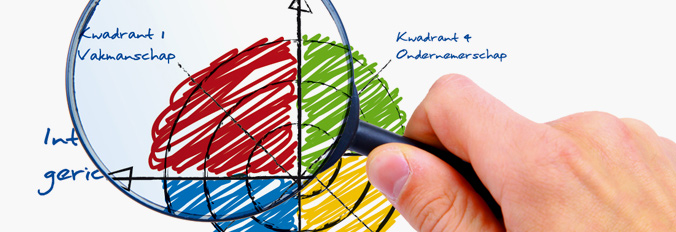Customer Orientation ? Treacy & Wiersema
Every organisation has a certain degree of customer orientation. However the degree to which this exists varies between companies. This degree is based on 'customer values': the ultimate reason why a customer does business with you. Customer values are a combination of customer benefits. All this cannot be an accidental success, but must have a conscious focus: what do we want to mean for which customers.
Making a choice essential for the success of a business. Some statements by gurus:
- "the most important choice that every company makes is the choice of the customers with which it wishes to do business"
- "the essence of market segmentation and determining target groups is choosing not to serve certain customers"
- "no company can succeed nowadays by pleasing every customer in every regard"
Product Leadership:
lead the field in everything; the new trends, be first to identify the next big thing. If one opts for this focus, one needs to spend a lot of money on research.
Consequences for structure and culture:
- knowledge and exploitation of the market;
- loose, ad hoc structure, constantly adapted;
- result-oriented management style, success is evaluated;
- and rewarded, room for experimentation;
- corporate culture stimulates performance and imagination, nurtures;
- unexpected ideas and forward thinking.
- more trend analysis than market analysis;
- creativity and ideas in the marketing approach as well;
- innovation and branding;
- event-driven launches.
have the entire process described in detail and everyone must abide by it; the process is leading in everything; the customer can therefore make no changes, because those changes could then 'worsen' the process; all this with an unequalled combination of price and quality and ease of purchase.
Consequences for structure and culture:
- product turnaround time streamlined and optimised;
- activities standardised, simple, controlled, centrally planned as much as possible;
- management style aimed at rapid, harmonised transactions;
- corporate culture: efficiency is rewarded, waste is abhorred.
- market research aimed at optimising the range;
- mass communication;
- promotion marketing.
personal service and expertise play an important role in this; the customer comes first.
Consequences for structure and culture:
- emphasis on core processes (solution development, result management, relationship management);
- decision-making power with people who are closest to the customer;
- management system aimed at a carefully selected customer base surrounded with a high level of care;
- corporate culture: set up for customer-specific instead of general measures and long-term customer relationships.
- customer loyalty;
- customer lifetime value;
- direct and personal communication;
- account management;
- structural binding through personal relationships.
A superior customer value = experience benefits - experience price, or:
Product leadership or Customer Intimacy – Operational Excellence
Illustration

Link with Quinn
This model fits into the quadrants of the Quinn model as follows:

More information
- Click here to pose your question
- Previous page





